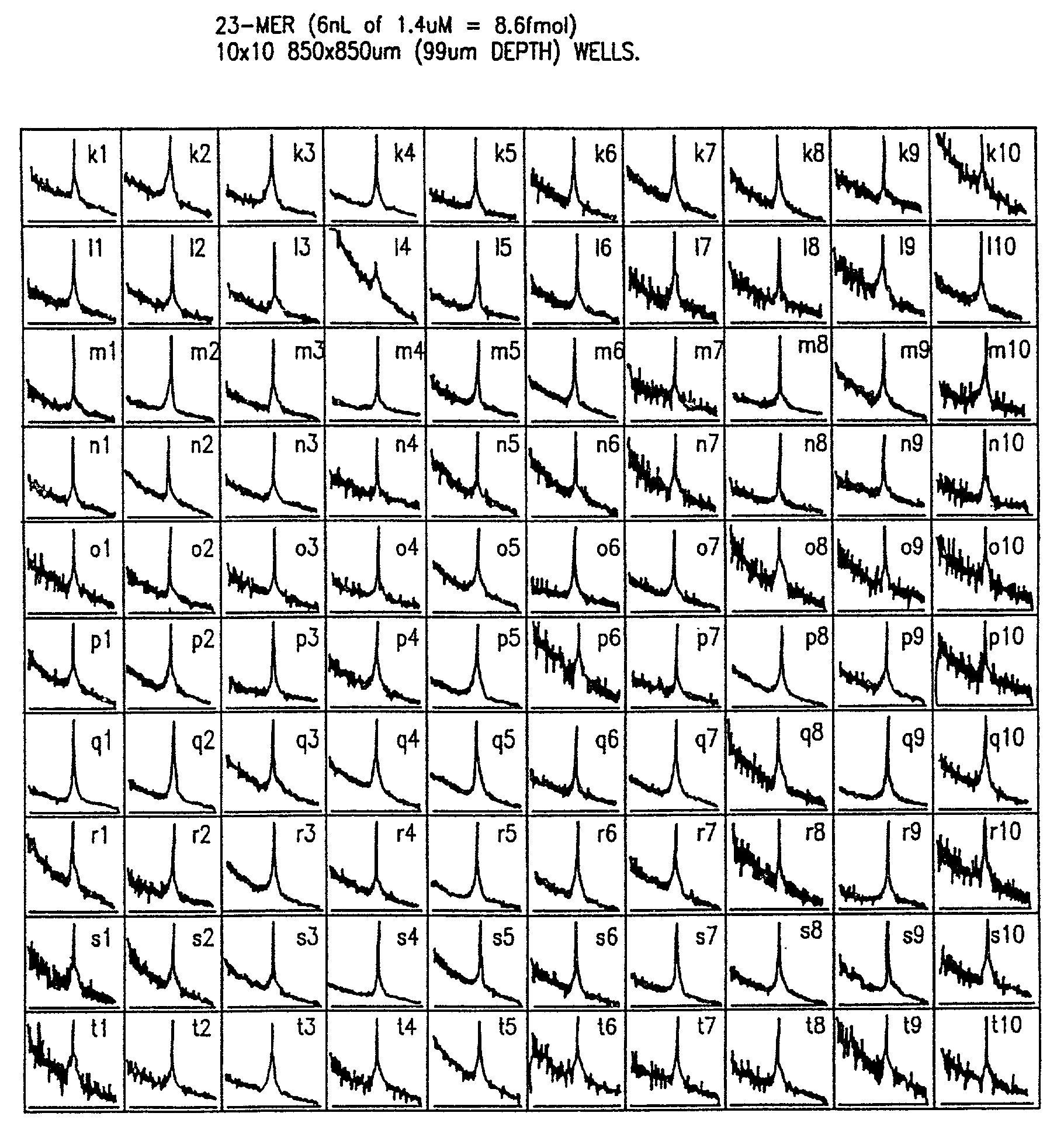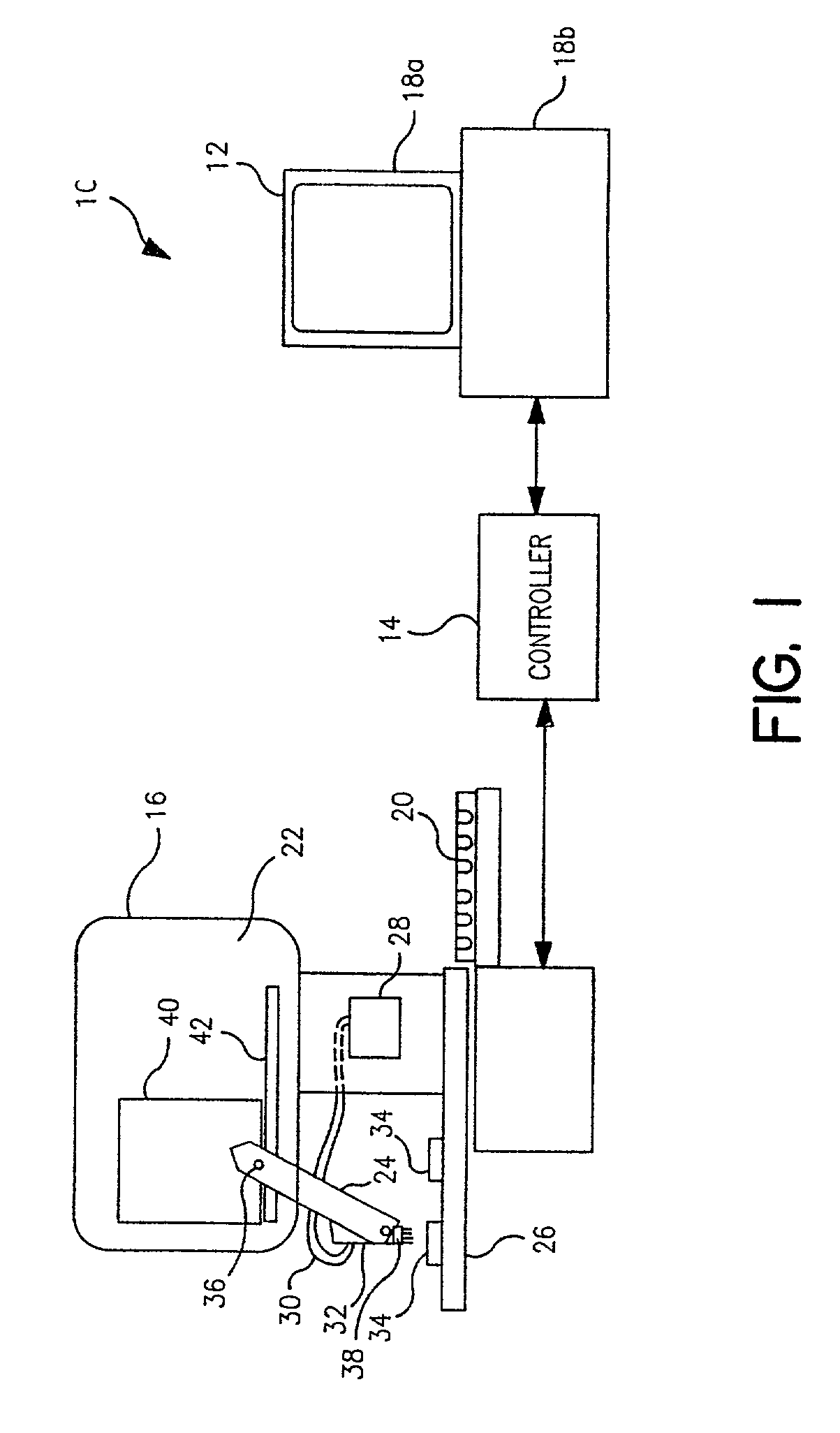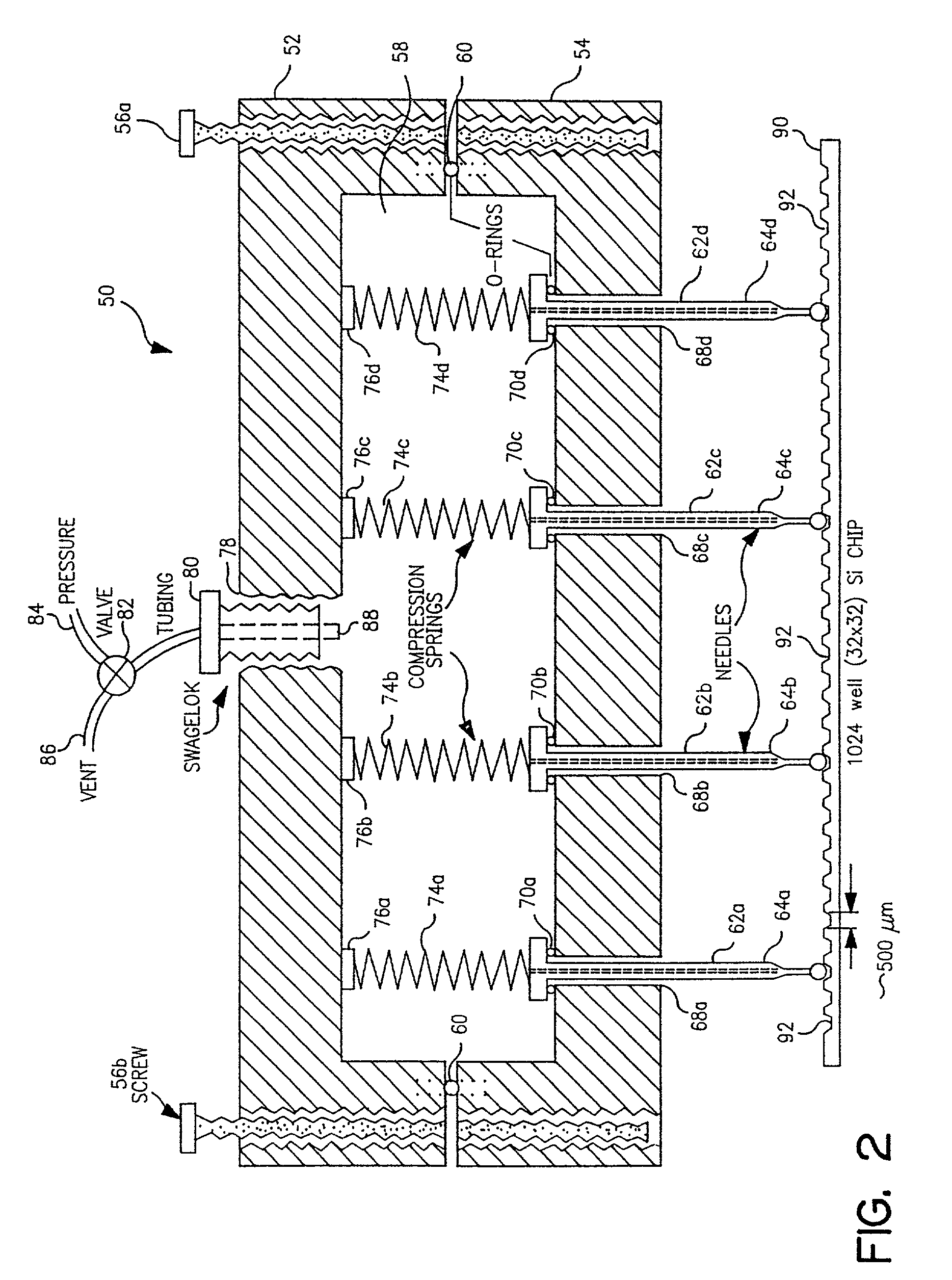Systems and methods for preparing and analyzing low volume analyte array elements
a low-volume, array element technology, applied in the field of systems and methods for preparing samples for analysis, can solve the problems of low value of traditional analysis techniques, cumbersome analysis of dna, and loss of biochemical activities of proteins, and achieve the effects of less expensive use, high reproducibility of arrays generated, and rapid production of sample arrays
- Summary
- Abstract
- Description
- Claims
- Application Information
AI Technical Summary
Benefits of technology
Problems solved by technology
Method used
Image
Examples
examples
[0076]Robot-driven serial and parallel pL-nL dispensing tools were used to generate 10-103 element DNA arrays on 5. In a second approach, probes from a 384 well microtiter plate are dispensed 16 at a time into chip wells or onto flat surfaces using an array of spring loaded pins which transfer ˜20 nL to the chip by surface contact; MS analysis of array elements deposited with the parallel method are comparable in terms of sensitivity and resolution to those made with the serial method.
[0077]I. Description of the piezoelectric serial dispenser. The experimental system built on a system purchased from Microdrop GmbH, Norderstedt Germany and consists of a piezoelectric element driver which sends a pulsed signal to a piezoelectric element bonded to and surrounding a glass capillary which holds the solution to be dispensed; a pressure transducer to load (by negative pressure) or empty (by positive pressure) the capillary; a robotic xyz stage and robot driver to maneuver the capillary for...
PUM
| Property | Measurement | Unit |
|---|---|---|
| volume | aaaaa | aaaaa |
| size | aaaaa | aaaaa |
| size | aaaaa | aaaaa |
Abstract
Description
Claims
Application Information
 Login to View More
Login to View More - R&D
- Intellectual Property
- Life Sciences
- Materials
- Tech Scout
- Unparalleled Data Quality
- Higher Quality Content
- 60% Fewer Hallucinations
Browse by: Latest US Patents, China's latest patents, Technical Efficacy Thesaurus, Application Domain, Technology Topic, Popular Technical Reports.
© 2025 PatSnap. All rights reserved.Legal|Privacy policy|Modern Slavery Act Transparency Statement|Sitemap|About US| Contact US: help@patsnap.com



